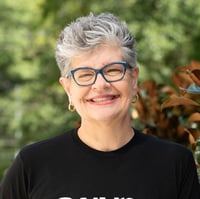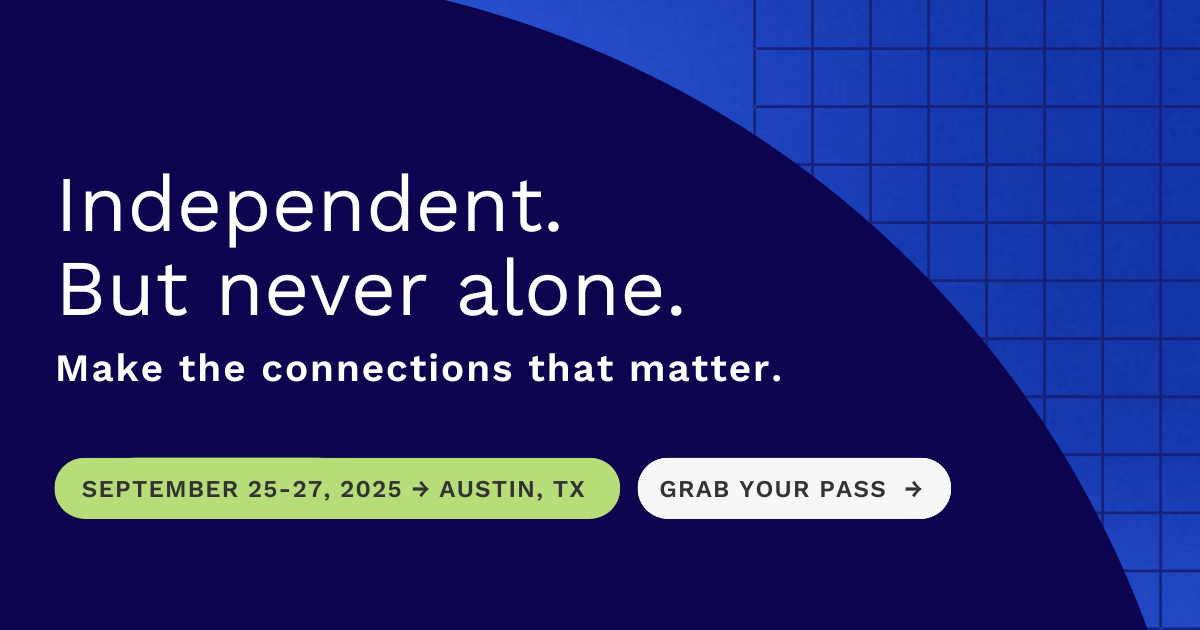How the Entrepreneurial Operating System (EOS) Can Make Your Firm Thrive
Share this
In the early days of running a firm, there’s so much going on and so much to do that it’s easy to start jogging and then keep on running without thinking about where you will end up. I’m here to tell you to take a moment to stop running—it’s time to think about where you are going and create a structure for your business to get you there, even while you still have a lot of work to do. The Entrepreneurial Operating System (EOS) is just the thing to provide you with a lasting framework to make sure you are heading in a direction you have chosen with intentionality that’s in alignment with your values—and empowering tools to actually help you get there.
Simply put, EOS helps entrepreneurs get more of what they want out of their businesses. Implementing EOS within your firm can help you define what you care about, the direction you want to take your business, develop solutions, streamline communication, provide you with a quarterly cadence, and so much more. How do I know? Here At XY Planning Network, we built our business using EOS.
Several years ago, when we first implemented the EOS framework at XYPN, the executive team went through extensive training with Jerry Kauffman, a certified EOS Implementer, followed by training for the entire XYPN Dream Team. If you haven’t heard Jerry Kauffman’s recent episode of XYPN Radio, I encourage you to listen or watch. Jerry has been a wonderful resource for all of us and plans to share his EOS wisdom at an #XYPNLIVE 2021 Pre-Con event this November. In the interactive workshop, Jerry will provide an overview of the EOS model and the tools you need to apply it to your firm. As XYPN’s Executive Business Coach, I’ll be joining Jerry at this event to share my insight from working with and coaching XYPN members who have implemented EOS. Get more information and register for the Pre-Con event here.
Following Jerry’s training with the XYPN executive team, all teammates were assigned to read What the Heck is EOS by Gino Wickman & Tom Bouwer. It was a great first introduction to EOS for those of us that didn’t have experience with it. The team training helped to get everyone ready to use the tools and structure EOS provides. I will admit that at first, I thought this was just another trendy way to get a team on the same page. I was skeptical that it wasn’t truly any different from others I have seen over the years. As soon as I read What the Heck is EOS, I wanted to know more about how this might work with XYPN member firms. I read Traction: Get A Grip On Your Business by Gino Wickman—the book that started it all, and I was all in. Aside from the cursory overview above, what the heck is EOS, and what does it have to offer your firm? Let’s dig in.
What is EOS?
The Entrepreneurial Operating System framework facilitates a deeper understanding of your business. EOS is an operational framework that revolves around six major components and five tools to help you implement the system. The six major components are:
Vision
You will be building on your “why” from Simon Sinek’s work, “Start With Why.” EOS guides you in developing a vision for your company so that you know where you are going, and you must communicate that vision to your team. Here at XYPN, Alan Moore has been known to throw out a pop-quiz to see how many of us can shout out the vision we embrace for the future of our organization at a moment’s notice.
People
The second component is the people—the rockstars that make up your team. You need the right people doing the right work. In working with EOS, you will hear the phrase, “right person, in the right seat” because that combination is integral. You may have a great teammate, but you may have put them in a position that just isn’t the best use of their skills. I see this often when fantastic operations people rise through the ranks and assume that being a planner is the only way to keep moving up in the firm. But they may be an operations genius who just isn’t thriving as a planner. That’s ok. They are the right person for the team, but they got put in the wrong seat. You can adjust that, but you have to be tuned in enough to the People component to have the necessary awareness. EOS helps you get there.
Data
You know this is how we got Michael Kitces on board, right? All jokes aside, XYPN lives and breathes data. You can have a vision and great people, but if you don’t measure your progress, you won’t know if you are getting there on schedule. Suppose you want to sign 24 new clients in a year. If you don’t measure your prospect numbers or new contracts signed, you could end up in November with only four new clients, for example.
Issues
No matter how killer your team is, there will be issues that arise and decisions that need to be made. EOS provides you with a process and consistent method of identifying, addressing, and truly solving issues, so they don’t come up time and time again without resolution.
Process
We know you love processes! You have them for prospects, clients, and perhaps your marketing plan. But do you have them for the day-to-day running of your business? EOS provides you with streamlined processes so that everyone on the team knows how things operate and move forward. Processes get everyone on the same page; EOS helps you implement them.
Traction
The Traction component is the framework that structures all of the other components. Traction is where it is all put into action, and you’ll often see users wanting to jump ahead to this step. Several of the tools you’ll use with EOS come into play when you arrive at the Traction element.
The EOS tools
Ready to get to work implementing EOS? Maybe not yet. You probably still have some questions—how does it all go together? Where do you begin? Before you move forward, you’ll want to get the EOS Toolkit.
The first tool you’ll care about is the Vision/Traction Organizer (V/TO), which documents the vision, the big issues, and the 10-year and 1-year plans. The V/TO is your high-level view of the journey outlined ahead of you. Once you have the V/TO started, you will want to work on the Accountability Chart. While you may be tempted to say, “Oh, yeah, we have an org chart, we’re covered,” the accountability chart tracks the responsibility for work, not necessarily the work itself.
Once you have your V/TO and your Accountability Chart situated, you’ll be using the other tools on a weekly basis. Remember your data! You and your team need meaningful metrics and measurable items to monitor each week to ensure you are on track, effectively keeping a pulse on your business. Each team member will have a data point that indicates if it was a good week or not. These may shift over time as different strategic initiatives launch and work focus changes, but everyone should have a way to determine how they are doing. This is reported using the scorecard each week at the team’s Level 10 (L10) meeting.
The L10 is named for the desire to have all meetings be rated a “10.” When operating under EOS, you want every meeting to have value, so your team will rank meetings and be more intentional about which meetings stay on the calendar. No more meetings where you hash over the same items again and again—you’ll use your L10 to make progress and track outcomes. The weekly L10 has a structure: you’ll check in on your scorecard, quarterly rocks (goals), issues, and any open to-do items. Since your team will know the L10 is held each week, they can add items to discuss to the agenda throughout the week.
Quarterly rocks are perhaps the part of EOS that is most recognized. Originating from the old time-management analogy of the rocks, pebbles, and sand put in the jar, EOS-style rocks refer to the two to four big things you need to accomplish in a given quarter. Rocks are not your everyday work—rocks are well-defined, measurable items that can either be marked as completed or not completed when the end of the quarter comes around. Rocks are the items that, when completed, will move your business forward. They are the must-accomplish tasks that need to be completed that quarter to get you and your business where you want to be by year-end. All rocks should support the company rocks, which support your long-term vision.
Source: https://www.eosworldwide.com/what-is-eos
Why implement EOS?
Jerry Kauffman shared with me that there are five frustrations that many entrepreneurs experience. These are the reasons that lead people to EOS:
- Control: You used to have control of the business, now the business has control of you.
- People: They just don’t get it. You know where you want the business to go, but you just can’t seem to get people on board.
- Profit: There’s not enough. It’s not about being greedy. It’s just that you’re working so hard and not getting out of it what you should be getting.
- Hitting the ceiling: It was pretty easy for a while, but now you’re stuck and worried about plateauing or, worse, going backward.
- Nothing is working: You’ve read lots of books and tried a lot of “programs.” They helped a little, but nothing is giving the business the overall structure it needs to get to the next level.
As I have worked with members using EOS, I find it helps the team to stay on track when the business pulls you away. The entire team knows what to expect and shares a common language. For example, our team will say throughout the week, “Let’s IDS that during the next L10,” as a way of collecting and organizing the things we need the team to address. Just having a designated spot to store those issues has increased our productivity.
Another major benefit is the ability you have to keep your finger on the pulse or rhythm of the business through your weekly reporting of meaningful metrics. Along with knowing the common language, you know a common schedule. By sticking to the common schedule and determining your quarterly rocks together, it gives your team the ability to say no, or “later” when other items come up that try to climb up the priority list. You and your team will find your workloads become more intentional and aligned with your long-term vision.
Jerry will often say that EOS is a way to “get more of what you want from your business.” By understanding and articulating what you want from your business, you are more likely to achieve it, but this is work that many business owners don’t take the time to do. It’s hard work and cannot be approached lightly. Each of you may want different things from your business, but regardless of the vision, you each need a means of aligning your team and executing in a way that positions you and your business to achieve what you desire.
Once you begin to implement EOS, you will hit some bumps. At XYPN, we created space to address how implementing EOS felt and what our concerns were. Being willing to discuss the hesitation openly was key to getting buy-in and support. One small item our team had was that we misremembered the definition of IDS (Identify, Discuss, Solve). Because we put issues on the IDS list, we became anchored to the word issue, but there’s a distinctly negative connotation attached to that word. Our team talked it through and cut back on the use of the word. We came to see it as a holding place, an agenda builder of sorts. Now we just say, “I’m going to IDS this,” which means, “This isn’t urgent, but we need to make space to discuss it.” With your L10s, you have that space.
Forgiveness, along with room for learning and growth, was critical. EOS is easy to apply and get started with, but it is a continued journey. Determining our quarterly rocks was hard at first. For several quarters we had too many, which made it hard to focus and get each one completed. We slipped into traps of not “smartifying” them. We had to learn to take each rock and frame it as a SMART (specific, measurable, achievable, relevant, and time-bound) goal. Even when we limited the number and made rocks SMART, we tripped up by making them too big. Our team never wants for ideas and dreams, but it took some practice to corral the scope of those ideas within a three-month period. Team setting was so valuable for all of these issues. We used one another as sounding boards and to gauge how reasonable the scope of our rocks were. Sometimes it is easier to see someone else biting off more than they can chew than it is to see your own over-commitment.
Another challenge our team has faced is rocks that go nowhere. Work to ensure your rocks connect to the company rocks and that they build upon one another over time. There will be times when a project is shelved, but if your team sees too many of their rocks on a shelf, their dedication to the next rock will falter. As you create a rock, discuss the next rock that comes from that, and how it plays to your long-term vision.
Above all, as you move forward, Jerry and I both encourage you to remember it is a journey; it is not the destination that’s the most essential element. If you find the tools are helping you and you aren’t the perfect EOS team, that’s still considered a win. Better is still good stuff!
Want to learn more about how EOS can help you gain clarity and traction within your firm? Join Jerry and me for our in-person #XYPNLIVE Pre-Con event on Monday, November 8th, right before the conference kicks off. This interactive workshop is meant for you (and your leadership team, if applicable) to learn how to implement EOS within your firm. We’ll have a bit of pre-work for you to do, and over the course of the workshop, you will learn more about EOS, the tools, and have workshopping time to get started on your own firm’s work. We welcome questions ahead of time to learn more about the challenges you are facing and what you want most to get out of the workshop. Get all the details or register for the event here. We’d love for you to join us!
Resources
- #XYPNRadio Ep #316: Get What You Want Out of Your Business Using the EOS Model: An Interview with Jerry Kauffman
- Jerry Kauffman: Website | LinkedIn
- Traction: Get A Grip On Your Business by Gino Wickman
- What the Heck is EOS by Gino Wickman & Tom Bouwer
- XYPN LIVE
- XYPN LIVE Pre-Con events
 About the Author
About the Author
Arlene Moss, XYPN's Executive Business Coach, gets a kick out of helping financial advisors get over being overwhelmed and take on their frustrations so their businesses soar. Arlene works to ensure XYPN members are able to help their clients prosper while creating a sustainable business model. Through XYPN Academy and one-on-one coaching, members get the support they need to grow their businesses and overcome the challenges that come their way.
Share this
- Road to Launch with XYPN Member Alan Skillern, CFP®, MBA
- Coaching for Better Time Management: Prioritizing Organic Growth in Your Daily Routine
- Boost Your Financial Advisory Practice: SEO Strategies and CRM Optimization for Sales Success
- Navigating the AI Revolution: What Financial Advisors Need to Know
- Advisor Blog (692)
- Financial Advisors (221)
- Growing an RIA (99)
- Digital Marketing (87)
- Marketing (84)
- Community (81)
- Start an RIA (76)
- Coaching (72)
- Business Development (71)
- Running an RIA (70)
- Compliance (69)
- Client Acquisition (65)
- Technology (64)
- XYPN LIVE (59)
- Entrepreneurship (56)
- Sales (49)
- Practice Management (44)
- Client Engagement (41)
- XYPN Books (38)
- Bookkeeping (37)
- Investment Management (37)
- Fee-only advisor (36)
- Lifestyle, Family, & Personal Finance (31)
- Employee Engagement (30)
- Client Services (25)
- Financial Education & Resources (24)
- Journey Makers (21)
- Market Trends (21)
- Process (14)
- Niche (11)
- SEO (9)
- Scaling an RIA (9)
- Career Change (8)
- Transitioning Your Business (7)
- Partnership (6)
- Transitioning To Fee-Only (4)
- Social Media (3)
- Transitioning Clients (3)
- Emerald (2)
- Persona (2)
- RIA (2)
- Onboarding (1)
- Sapphire (1)
Subscribe by email
You May Also Like
These Related Stories

Summer Reading Suggestions from the XY Planning Network Team
Jun 14, 2021
6 min read

What Challenges Do Firm Owners Face in Years 3-7? What Would Arlene Say?
Aug 8, 2019
13 min read





